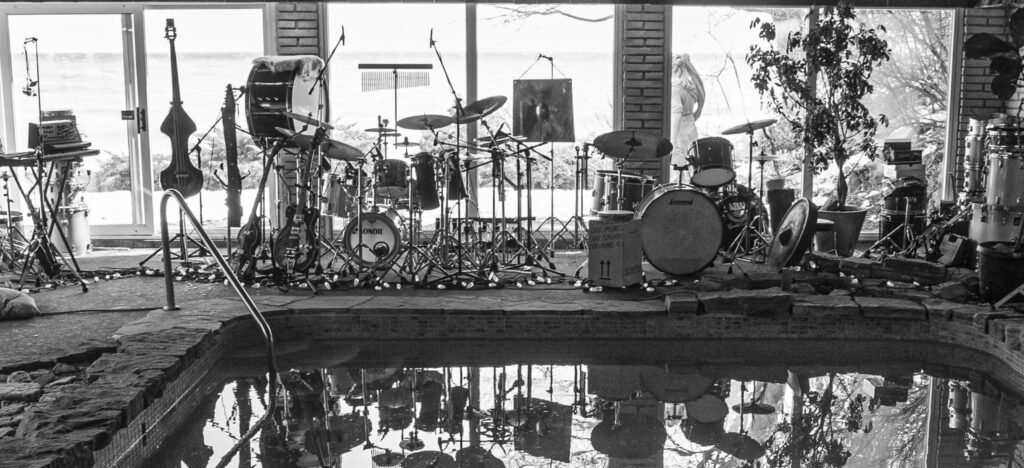Finding Your Voice through Digital Mediums: The Recording of Glueleg’s Horror Vacui

In today’s creative landscape, the ability to harness digital tools effectively can make the difference between an idea that lingers in the mind and a project that comes to life with authenticity. For musicians and artists striving for genuine self-expression, understanding how to embrace a digital-first approach can open up limitless opportunities for transparent, unfiltered creation. In this case study, I share the journey of recording Glueleg’s Horror Vacui, not just as a musical return after a 25-year hiatus, but as an example of how to find your voice through the unique strength of multidisciplinary thinking and the power of digital mediums.
The Return of Glueleg: A Story of Artistic Revival
Glueleg, known for its avant-garde sound and experimental approach, had been absent from the music scene for over two decades. When I conceived the idea of bringing the band back to create Horror Vacui, it was driven not by nostalgia but by the desire to create something raw and reflective of our true artistic identity. This was an opportunity to lean into a digital mindset—one that values speed, transparency, and the iterative creativity often seen in disciplines like multimedia and UX design.
Embracing Multidisciplinary Thinking in Digital Creation
One of the greatest strengths of adopting a multidisciplinary mindset is the ability to draw on various skills and approaches to solve creative challenges. For this album, I leveraged my experiences in digital design to infuse the music production process with principles of iteration, version control, and adaptability. This not only streamlined our workflow but also fostered a space where artful self-expression could flourish without compromise.
How Horror Vacui was Produced: A Case Study
Step 1: The Foundation – Composing and Recording
The creation of Horror Vacui started with composing and recording a diverse array of instruments, including the Chapman Stick, classical and electric guitar, electric upright bass, bass guitar, and the enigmatic Korg MS20 synthesizer. Working from my home studio, I prioritized capturing the essence of each sound with immediacy, allowing creative impulses to be acted upon without the preparations and delays that often come with traditional recording studio environments.
Musical ideas were born from “seed” concepts—emotive fragments that inspired initial recordings. The fluidity to switch between instruments and develop multitrack audio layers led to an evolving process where each passage naturally suggested new directions. One musical recording could spark a visual interpretation: an illustration, or a photograph, or a particular emotional thought. This cycle—where a visual piece or feeling would then inspire a new musical track—allowed for a deeply interconnected, organic creative process, all facilitated by the immediacy and adaptability of digital recording techniques.
Step 2: Capturing Unique Acoustics – The Drum Sessions
Recording the drums was a pivotal part of shaping the album’s atmosphere. To achieve the desired sound, we utilized the indoor swimming pool room of Chris’s house, leveraging the space’s natural acoustics for depth and resonance. We worked carefully to place microphones to capture and balance room acoustics, using 16 channels of Focusrite digital interfaces and configuring a Mac mini with Pro Tools. I developed a customized and reusable recording template file in Pro Tools that could be accessed, repurposed and tweaked remotely from my home. This setup ensured we captured every detail of the performance in high fidelity, but was flexible enough to make adjustments, allowing for an iterative and evolving creative process.
Step 3: Assembling and Managing Multitracks
One of the greatest benefits of working digitally was the ease of managing and assembling multitrack recordings. I created a Google Cloud Drive with a well labeled and arranged file structure (technique borrowed from web development processes) to store and share files, enabling seamless and fast collaboration. This transparent approach fostered a workflow where adjustments and feedback could be exchanged quickly, a process that drew from UX and product design principles of iteration and version control.
Step 4: Mixing “In the Box”
The mixing stage was completed entirely using Pro Tools, showcasing how powerful software can replace traditional mixing techniques while maintaining creative flexibility. This allowed for each layer, from instrumental harmonies to subtle effects, to be adjusted instantly. Techniques often used in digital design—such as rapid prototyping and adaptive adjustments—proved valuable in achieving the dynamic, unfiltered sound that defined Horror Vacui.
Lessons Learned: The Power of a Digital Mindset
What became evident throughout this process was that adopting a digital designer’s mindset was not just beneficial but essential for maintaining the integrity and immediacy of the work. Transparency in the workflow, combined with the flexibility to reiterate and adapt, reinforced the album’s authenticity. This process eliminated the delays that could have cost both money and creative momentum, enabling the work to stay true to its original vision.
The Multidisciplinary Edge: Empowering Creators
Multidisciplinary thinking brought strength to the creation of Horror Vacui. The ability to borrow principles from digital design—such as version control and iterative development—allowed for a unique approach to music production that was efficient and genuine. For any artist or musician looking to harness digital tools, embracing these concepts can transform how you create and share your work.
Conclusion: Inspiring Transparent Artistry
Horror Vacui stands as a testament to what is possible when creators merge artistic intention with the strategic use of digital tools. By applying a multidisciplinary mindset, artists and digital designers alike can build a process that celebrates authenticity, encourages rapid expression, and bridges the gap between vision and reality.
For those who want to dive deeper into mastering these techniques and understanding the full potential of digital music production, the Audio Production Certification through the Digital Designer Designation is designed to inspire and empower creators to find and project their true voice.
